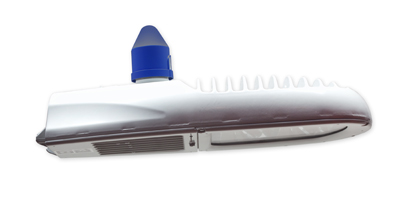ELECTRIC
Sensus Lighting Control (SLC), powered by the FlexNetTM communications network, allows you to efficiently manage the lighting of large public areas - yet exercise full control down to an individual lamp. Our system utilizes induction and LED lamps that provide brighter, whiter light and excellent color rendering compared to the dim yellow-orange glow offered by older lighting technologies.
Plus, the ability to control individual lighting properties allows smarter use of resources – ranging from shorter operational hours to virtually imperceptible light reduction during non-critical hours for additional cost savings. And unlike other systems, Sensus Lighting Control lets you see those cost savings, because the SLC control board has an integrated metrology chipset to measure energy consumption for each lamp. That’s like having a meter on every light for accurate billing instead of estimated usage. - FlexNet
Sensus Lighting Control is truly one of the first steps toward an integrated smart grid network, enabling utilities or communities to expand the benefits beyond basic meter communications to multiple applications that use resources effectively and efficiently. FlexNet is a smart grid communications solution utilized by some of North America’s largest electric, gas and water utilities. This robust system operates on primary-use radio frequencies, instead of crowded public wi-fi channels, for exceptional performance and response.
Maintenance Savings
- No internal electrodes
- Consistent light output without dimming as the lamp ages
- No photocells
- Reduced maintenance cost and premature “aging” of the lamp from oscillating of the photocell relay as it fails
- On-board diagnostics
- The SLC transceiver alerts maintenance staff to issues with lamp and parts required for repair – avoiding several truck visits or unnecessary waste in replacing good parts to solve difficult-to- diagnose problems
- Extended Lamp Life
- LED and Induction lights offer longer product life as compared to older technology
Energy Savings
- Programmable on/off time
- Minimizes unnecessary energy consumption when ambient light levels are adequate, which saves about one hour of consumption per lamp, per day
- Instant-on
- Lamp does not need “warm-up” time to build full light output, which equals fewer operational hours
- Programmable light output
- Reduce energy consumption 25- 50% by decreasing light output with little perceptible change to the human eye during non-critical hours, for example between 2 and 5 a.m.,
- Induction or LED technology
- Uses less power to produce brighter, whiter light compared to low-pressure sodium (LPS), high pressure sodium (HPS), mercury vapor (MV) or metal halide (MH) lighting technologies
Public Safety
- Reduce crime and avoid accidents
- Improved brightness and color rendering enable better visibility so that citizens can be more aware of their surroundings
- Public safety personnel can also increase light output of individual lamps in response to security concerns or issues.
- Programmable flash and chase
- Individual lamps can be made to flash, alerting public safety personnel and assisting them in reaching those in need faster
- Chase feature can be implemented to indicate a change in traffic flow for emergencies or large-scale evacuation


